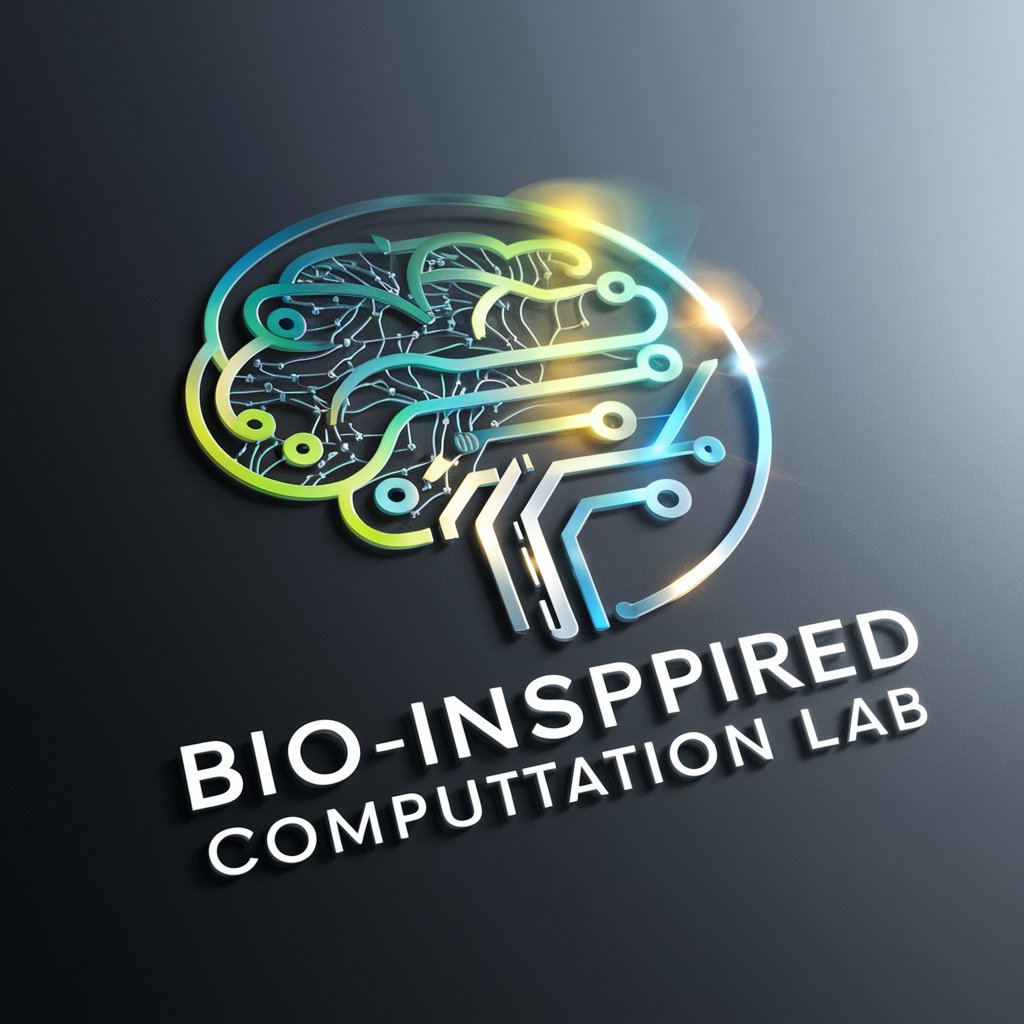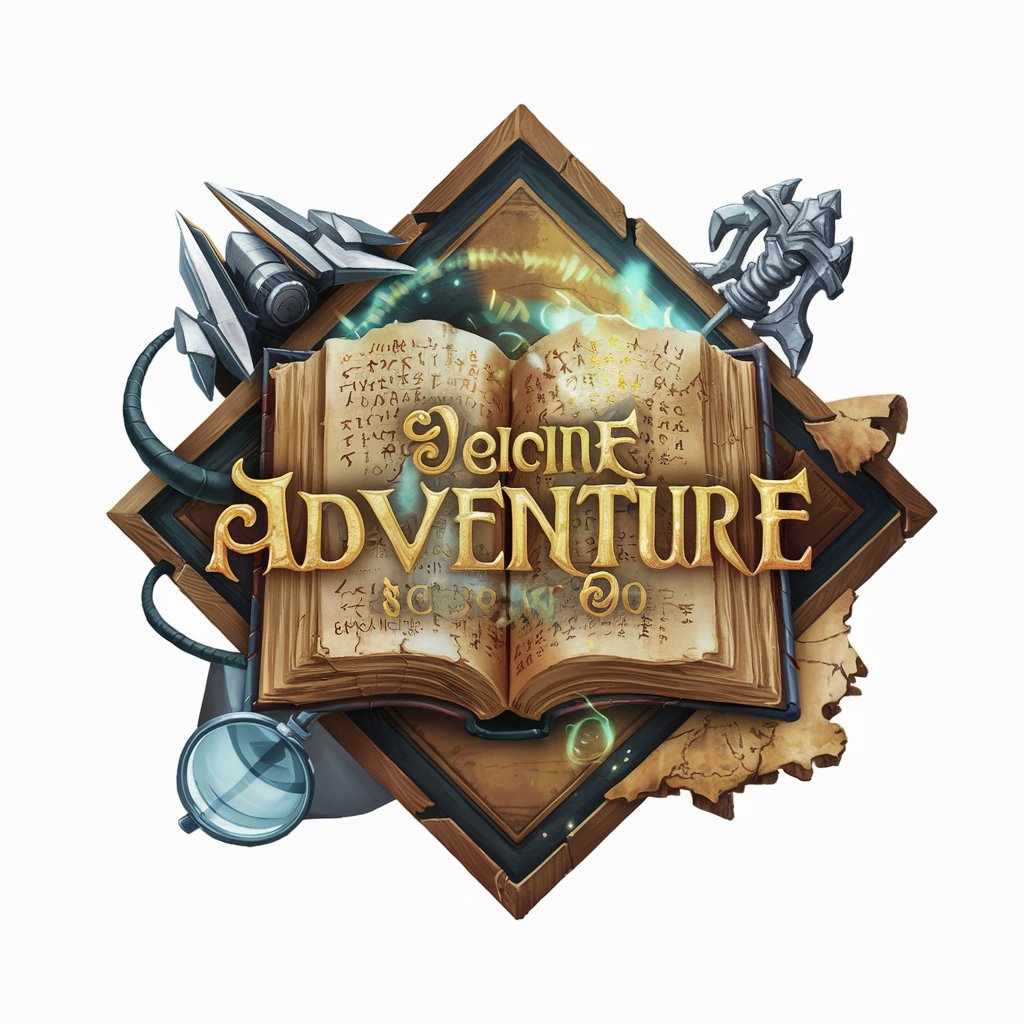Bio-Inspired Computation Lab - Bio-Inspired AI Solutions

Welcome to the Bio-Inspired Computation Lab.
Empowering Research with AI-Inspired Innovation
Design an innovative...
Generate a concept for...
Create a visualization of...
Illustrate a logo that captures...
Get Embed Code
Overview of the Bio-Inspired Computation Lab
The Bio-Inspired Computation Lab operates at the crossroads of biology, engineering, and physics, dedicated to pioneering the next generation of computing technologies. Leveraging the principles observed in natural biological systems, the lab focuses on developing neuromorphic computing solutions that surpass the limitations inherent in traditional digital computing architectures. For instance, the lab addresses the high energy consumption of von Neumann architectures by exploring bio-inspired computing paradigms that mimic the efficiency of biological neural networks. Using materials that respond to physical inputs such as light, forces, or molecular interactions, the lab aims to advance beyond silicon-based computing towards systems that can learn from and interact directly with their environment. This approach is not only more sustainable but also opens new possibilities in fields like medical diagnostics, environmental monitoring, and robotics. Powered by ChatGPT-4o。

Core Functions of the Bio-Inspired Computation Lab
Development of Neuromorphic Computing Systems
Example
Creating systems that mimic the olfactory perception of smells
Scenario
In one project, the lab collaborates to develop artificial systems that can accurately and efficiently mimic the natural olfactory system, integrating synthetic biological pathways with neuromorphic circuits and algorithms. This enables applications such as sophisticated environmental monitoring and diagnostic tools that can detect and analyze complex chemical signatures.
Exploration of Renewable Biomass for Electrical Circuit Elements
Example
Utilizing biomass materials to create sustainable electronic components
Scenario
By researching how renewable biomass can be converted into electrical circuit elements, the lab contributes to reducing the environmental impact of semiconductor manufacturing. This research not only addresses the miniaturization and pollution challenges of current technologies but also paves the way for more sustainable and efficient computing infrastructures.
Study of Artificial Neural Networks Evolution
Example
Investigating how learning evolves within artificial neural networks
Scenario
The lab examines the mechanisms behind the evolution of learning capabilities in artificial neural networks, aiming to enhance their performance and adaptability. This fundamental research supports advancements in AI, improving how machines learn and adapt to new information or environments.
Target Users of Bio-Inspired Computation Lab Services
Academic Researchers
Scholars and scientists in fields such as computational neuroscience, bioengineering, and physics who are seeking to explore the intersection of biology and computing. They benefit from the lab's cutting-edge research, interdisciplinary collaborations, and access to novel computing paradigms for their experimental and theoretical work.
Technology Developers and Engineers
Professionals in the tech industry working on developing sustainable, efficient computing technologies. They can leverage the lab's innovations in neuromorphic computing and bio-based materials to create next-generation products that are both powerful and environmentally friendly.
Environmental and Healthcare Organizations
Organizations focused on environmental monitoring and healthcare diagnostics that require advanced sensing and computing technologies. The lab's work on bio-inspired perception systems offers them new tools for detecting and analyzing chemical, biological, and environmental data with unprecedented efficiency and sensitivity.

How to Use Bio-Inspired Computation Lab
1
Begin your journey by visiting yeschat.ai to explore our Bio-Inspired Computation Lab without the need for a login or a ChatGPT Plus subscription, offering you a hassle-free trial experience.
2
Select a research area or question of interest within bio-inspired computation, such as neuromorphic computing, bio-inspired sensors, or synthetic biology applications.
3
Utilize the provided templates or tools specific to your selected area for experimentation, simulation, or theoretical analysis, ensuring you have a clear objective for your inquiry.
4
Engage with the community through the forum for collaboration, seeking advice, or sharing your findings to enhance your research and benefit from collective expertise.
5
Review and apply the tips and best practices shared within the platform for conducting bio-inspired computation research, such as data management strategies and experimental design optimization.
Try other advanced and practical GPTs
Interview Buddy
Ace your interviews with AI guidance

The Primal Diet by Aajonus Vonderplanitz
Revitalize Health with Nature’s Diet

Peritus Anatomicus - An Expert Anatomist.
Your AI-powered anatomical guide

Choose Your Own Adventure Book Generator
Craft Your Adventure with AI

逆アキネイター卍怒りのキャラビルダー
Craft Detailed Characters with AI

ネット話題雑談ボット
Engage, Learn, and Explore with AI

Melody Illustrator
Visualize Music with AI Artistry

モンスター召喚士 XANA Genesis Kamara
Summon anime-style monsters from anywhere!

滚雪球 (Snowball)
Empowering your investment with AI

StartJourneyGPT
Crafting Artistic Visions with AI

Zoom Video Creator
Create Zoom-Out Videos with AI

Calories Calculator
Discover What's on Your Plate with AI-Powered Analysis

Frequently Asked Questions About Bio-Inspired Computation Lab
What is bio-inspired computation?
Bio-inspired computation refers to the development of computing paradigms, algorithms, and architectures inspired by the principles and processes observed in biological systems. It includes neuromorphic computing, evolutionary algorithms, and synthetic biology approaches aiming to overcome limitations of traditional computing technologies.
Can I participate in ongoing projects at the lab?
Yes, the lab offers opportunities for engagement through HIWI/Master/doctoral studies in both experimental and computational work. Interested individuals are encouraged to apply by submitting their application to the designated email address, with positions available in areas like synthetic biology and neuromorphic computing.
What are the current research focuses of the lab?
Current research projects include Bio-Inspired perception of odors, Evolution of learning in artificial neural networks, and development of electrical circuit elements from renewable biomass. These projects aim to advance our understanding and application of bio-inspired approaches in computing and sensory systems.
How does bio-inspired computation contribute to sustainability?
Bio-inspired computation seeks to address the high power consumption and environmental impact of traditional computing architectures by exploring efficient, recyclable, and sustainable alternatives modeled after biological systems. This includes leveraging materials capable of interacting with physical inputs directly and developing technologies that mimic the recyclable nature of biological systems.
Are there any prerequisites for participating in lab projects?
Participants are expected to have a completed scientific university degree in natural sciences or engineering, along with enthusiasm for scientific work. Experience in laboratory work, electrical measurements, and signal processing is advantageous, as is the willingness to engage in interdisciplinary collaboration and scientific exchange.
